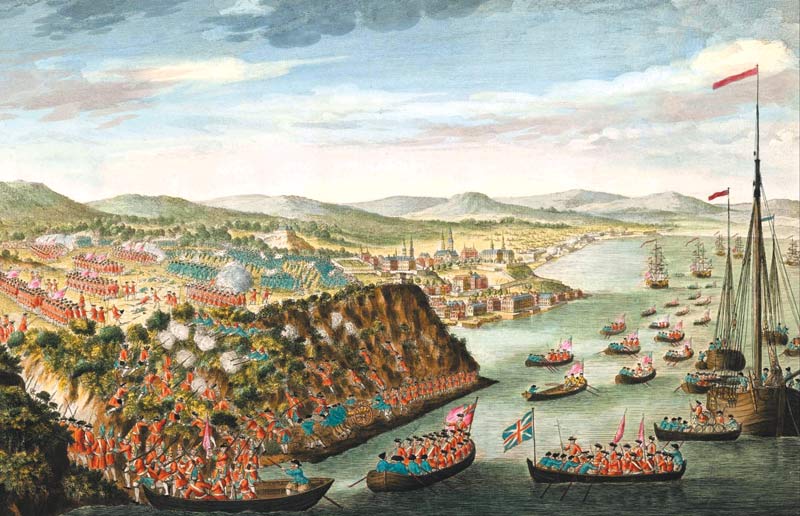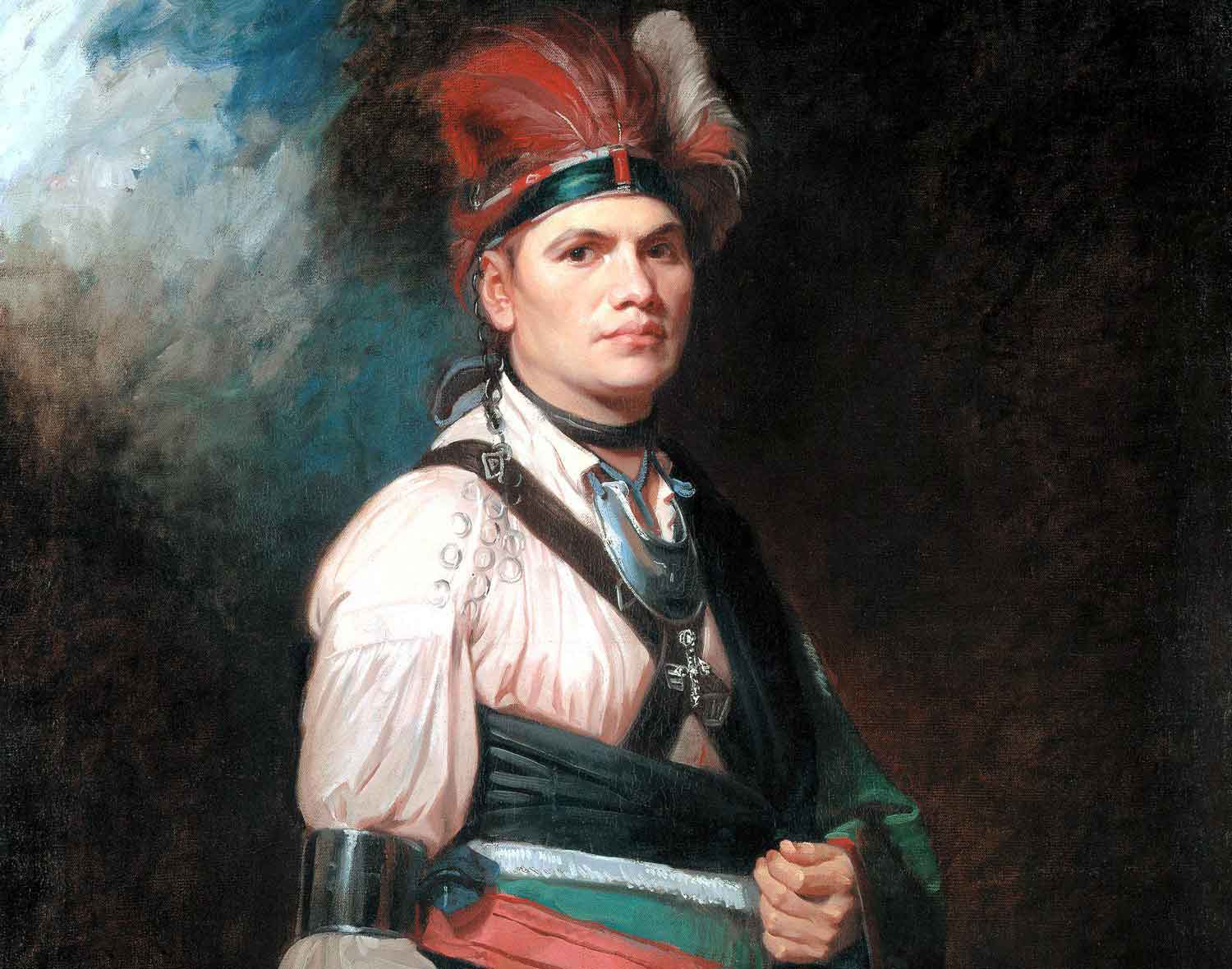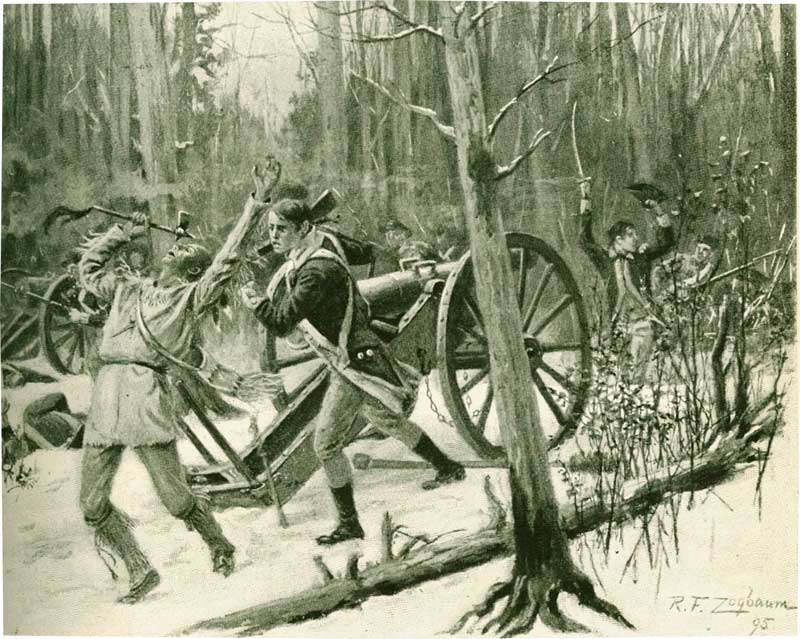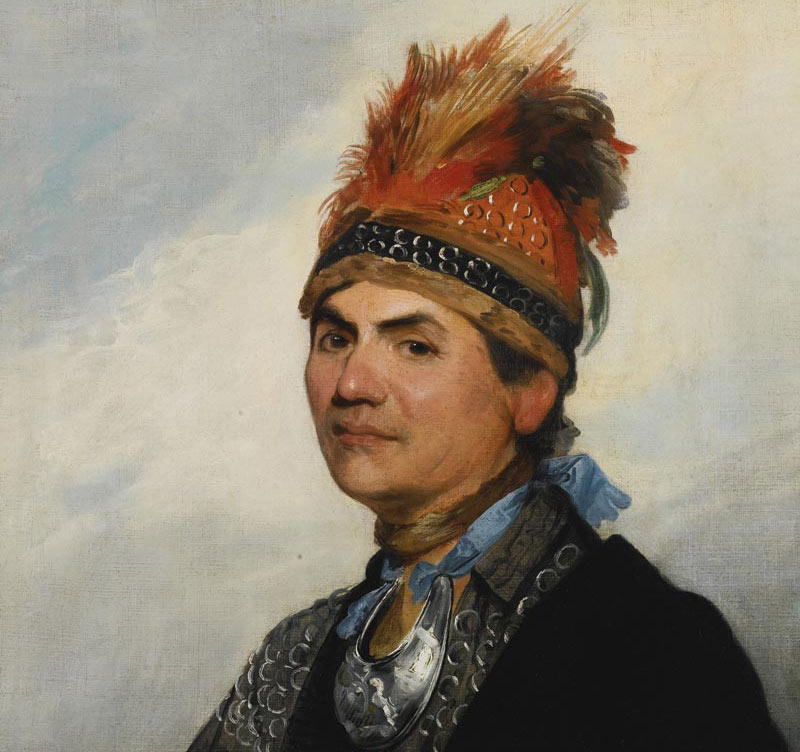His traditional name translates to “he who places two bets” or “two sticks bound together for strength”—but his tree of life has so many branches it’s difficult to know which two character traits combined to give him such a strong personality.
Warrior/diplomat? Loyalist/rebel? Perhaps it was thriving within two cultures, reflected in the fact he is remembered by two names: Thayendanegea/Joseph Brant.
He was a distinguished military leader and accomplished diplomat, an ally of Britain and a Mohawk warrior, for whom the city of Brantford, Ont., and Brant County are named, as well as the township of Tyendinaga and Tyendinaga Mohawk Territory.

After the war, he attended Moor’s Indian Charity School and learned to read and write in English. Since he also spoke at least three (and possibly all) Six Nations Iroquoian languages, he was able to use his ability as a translator, which garnered him the rank of captain and a position as secretary that took him to England in 1775 where he met King George III, was interviewed by James Boswell for a magazine article, used his position to advance Indigenous causes in North America, and became an anglophile.
At least three portraits of Brant in traditional garb were painted in England. One of these paintings hangs in the National Gallery of Canada in Ottawa.

Brant spent more than a decade in a doomed attempt to form a confederacy of Iroquois.
He raised a force of Indigenous warriors and loyalists who raided settlements and watched out for American attacks on Indigenous territory. Although promoted to colonel, he fought as a war chief.
British dispatches praised his stamina, courage under fire, dedication and ability as a leader. But he was unfairly reviled on both sides of the Atlantic for the bloody warpath in New York’s Mohawk Valley. The characterization of Brant as a monster responsible for the massacres was used in an American campaign to denigrate the Iroquois Nation’s fight for their land, and later in a British anti-war campaign.
To Brant’s disappointment, peace did not secure Indigenous land. Britain transferred its land south of Canada to the United States, even though the territory was occupied by Indigenous Peoples. Brant spent more than a decade in a doomed attempt to form a confederacy of Iroquois and western Indigenous people to present a united front in the fight for territory.
After much diplomacy by Brant, colonial officials in Canada granted the Mohawk a tract of land along the Grand River in Ontario as compensation for the land they lost in the U.S. Brant and about 2,000 followers established themselves in 1784 at Brant’s Ford, which is now Brantford, a populous city southwest of Toronto and hometown of Wayne Gretzky.
In 1785, Brant went to England again, asking for, but not receiving, support for the Indigenous confederacy. Brant became disillusioned with the British.When it suited them, former allies were willing to use Brant for their own purposes. Loss of traditional lands inflamed Indigenous Peoples everywhere. In 1791, U.S. President George Washington asked Brant to exercise his influence to bring about peace in the West.
Brant travelled through the western confederacy to broker an agreement on the boundary issue. But western U.S. Indigenous nations wanted the Ohio River as the border, and withdrawal of white settlers. This demand led to a battle which the U.S. army won.

Brant continued to press for an Indigenous confederation, which was now unpopular on both sides of the border.
But Brant continued to be useful to his people in making land claims and in liaising with government officials in Canada, the U.S. and Britain.
In Grand River, Brant helped get a school and church built, and fought for Six Nations’ land sovereignty, particularly the right for Mohawks to sell or lease their land.
Brant died in Burlington, Ont., on Nov. 24, 1807, but he is not forgotten. His manuscripts have been preserved in the U.S. Library of Congress. His statue is in the Valiants Memorial in Ottawa and there are statues of him in Brantford. A museum and a hospital in Burlington also bear his name.
Advertisement














